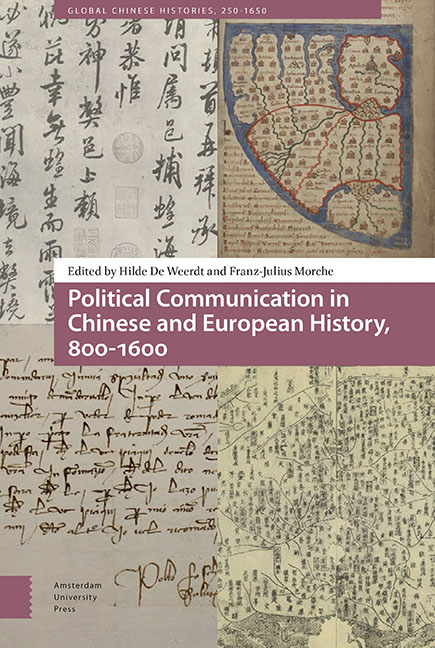Book contents
- Frontmatter
- Dedication
- Contents
- List of Figures and Tables by Chapter
- Acknowledgments
- Introduction
- Part I Communication and the Formation of Polities
- Part II Letters and Political Languages
- Part III Communication and Political Authority
- Part IV Memory and Political Imaginaries
- Epilogues
- List of Contributors
- Index
2 - Administrative Elites and Political Change
Published online by Cambridge University Press: 17 June 2021
- Frontmatter
- Dedication
- Contents
- List of Figures and Tables by Chapter
- Acknowledgments
- Introduction
- Part I Communication and the Formation of Polities
- Part II Letters and Political Languages
- Part III Communication and Political Authority
- Part IV Memory and Political Imaginaries
- Epilogues
- List of Contributors
- Index
Summary
The following studies focus on two distinct sets of events that led to changes in the administrative and political cultures of the Byzantine Empire during the eighth and ninth centuries, and in Song China (twelfth century). In both cases, these changes were initiated by an institutional repositioning of the tax administration. More specifically, our sources reveal groups of bureaucrats who, by mobilizing expert knowledge, contributed fundamentally to the reorientation of political and institutional frameworks.
In Byzantium, at the end of the eighth century, Irene ascended the throne as the reigning empress (797–802), having already acted twice as co-regent to her son Constantine VI (780–790 and 792–797) before having him mutilated and probably killed. Faced with increasing opposition, she allied herself with the bureaucracy of the capital, appointing several former bureaucrats-turned-monks as heads of important monasteries. This followed the re-establishment of Iconodulism (787), brought about by a patriarch who was also appointed by Irene and who came from the same social group. This reform upset the ideological foundation of the dynasty (that is, Iconoclasm) of which Irene's son was the last representative. The ensuing conflict between two composite factions — a legitimist and heavily militarized ‘nostalgic’ one, loyal to the deceased emperor, and one made up of administrative elites and monastic leaders supporting Irene — indirectly transformed the methods of knowledge transmission in the empire. The need for a rapid dissemination of propaganda texts aimed at the stabilization and legitimization of Irene's rule led to a sudden and sharp increase in the circulation of writing. Some monasteries — particularly the monastery of Stoudios in Constantinople — became main centres for the production and diffusion of manuscripts. From that point on, the transmission of literary texts was based on the minuscule script (replacing the majuscule), which is still used today and which, according to many palaeographic studies, had been used almost exclusively in tax documents up to this point. As a result, influential figures in the finance offices were able to take advantage of a particular political situation in order to extend their influence through a new application of their professional know-how. On a wider scale, they thus also triggered a process of profound change in the means of knowledge transmission.
- Type
- Chapter
- Information
- Publisher: Amsterdam University PressPrint publication year: 2021



